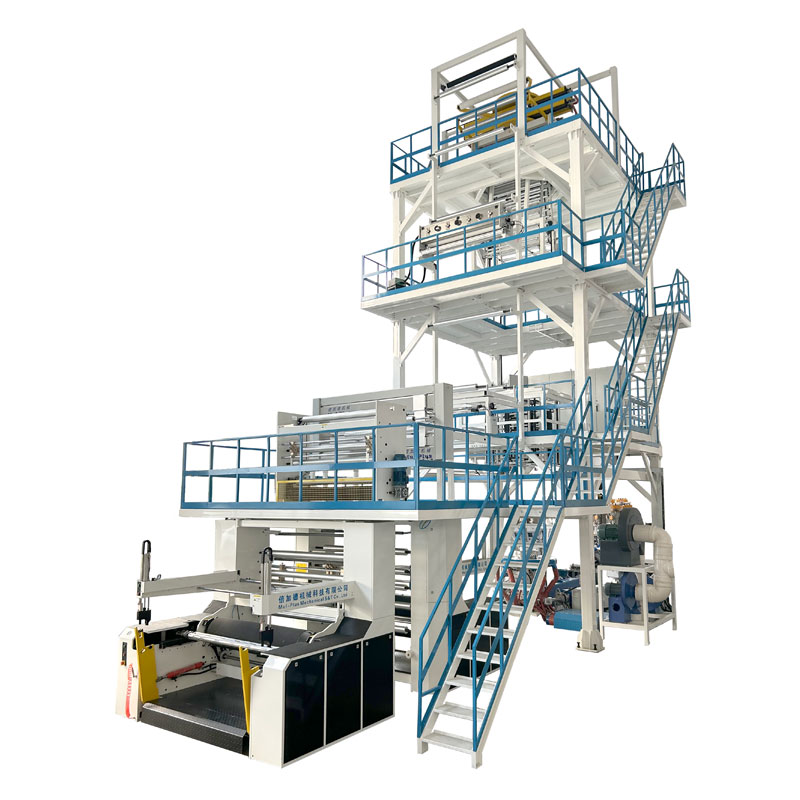Key points for maintaining the exhaust gas treatment system for a three layer, high-speed blown film machine?
To ensure efficient and stable operation of the exhaust gas treatment system for a three layer high-speed blown film machine and meet environmental protection requirements, meticulous daily maintenance is essential. Operators should develop a habit of regular inspections, primarily focusing on the seals and wear of the exhaust gas collection piping to prevent leakage of VOC-containing exhaust gases and contamination of the workshop environment. Furthermore, the cleanliness of the electrostatic precipitator plates is crucial. Accumulated plastic particles and tar should be removed periodically to prevent a decrease in electric field efficiency and excessive emissions. For long-term operation of this type of three-layer, high-speed blown film machine, the temperature and flow of the cooling medium at the front end of the exhaust gas treatment system must also be regularly checked to ensure that the exhaust gas is sufficiently cooled before entering subsequent treatment stages.
The core of the treatment system lies in the maintenance of the adsorption and decomposition stages. The activated carbon adsorption box or zeolite wheel, as key consumables, must be strictly monitored for adsorption saturation and replaced or regenerated at prescribed intervals. Otherwise, treatment capacity will drop sharply, compromising treatment effectiveness. The high temperature environment of the catalytic combustion unit poses a challenge to catalyst activity. Regular testing of its conversion efficiency is required, and specialized cleaning agents should be used to remove residual organic matter covering its surface to extend its service life. A three-stage filtration system is essential in the exhaust gas treatment chain of a three layer high speed blown film machine. Dust on the primary and secondary filters must be cleaned manually, and the high-efficiency filter should be replaced promptly based on the pressure differential indication to ensure the cleanliness of the exhaust gas at the end.
Establishing a systematic maintenance mechanism is key to ensuring the long-term compliance of the exhaust gas treatment system for a three layer high speed blown film machine. This includes detailed records of each maintenance task, consumable replacement schedule, and treatment efficiency data to provide a basis for fault prediction and optimization. Professional maintenance personnel should regularly use precision instruments (such as VOCs detectors and anemometers) to evaluate and calibrate the overall system performance, focusing on checking the lubrication of the blower bearings, the condition of the valve actuators, and internal corrosion in the piping to eliminate potential operational hazards. Only by combining preventive maintenance with proactive monitoring can the exhaust gas treatment system continuously operate and provide reliable environmental protection for the high-speed operation of a three-layer high-speed blown film machine.



